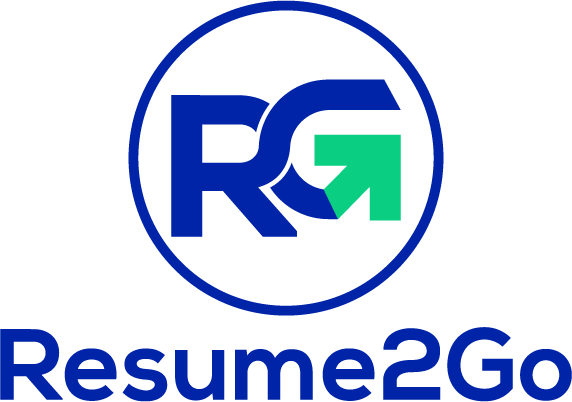Quantify Achievements on Your Resume: A Complete Guide to Resume Metrics

Quantifying achievements on your resume can make all the difference in how potential employers perceive your value. In this guide, we’ll cover what resume metrics are, why they’re essential, and provide actionable steps to incorporate them effectively.
What are Resume Metrics (& How Do You Use Them)?
Resume metrics are quantifiable measures that articulate the value you’ve brought to previous roles, making it clear how you’ve positively impacted an organization. They allow potential employers to gauge your performance in measurable terms, making your achievements both credible and compelling.
Common Types of Resume Metrics:Resume metrics can differ based on industry and role, but here are some powerful examples:
- Financial Metrics: Think revenue generated, costs saved, or budgets managed. These metrics are especially impactful in finance, sales, and executive roles.
- Operational Metrics: Include time saved, process improvements, and productivity increases.
- Performance Metrics: Whether meeting targets, customer satisfaction scores, or internal rankings, performance metrics highlight individual or team success.
- Project Metrics: Great for project managers; includes the number of projects managed, completion rates, and success percentages.
- People Metrics: Reflect leadership capabilities through headcounts managed, retention rates, or team performance improvements.
- Marketing Metrics: Show marketing impact through leads generated, conversion rates, website traffic increases, and more.
Including these types of metrics transforms your resume into a data-driven narrative of your accomplishments.
Why Quantify Your Resume?
Quantifying your achievements isn’t just about impressing recruiters; it’s about showcasing your unique value in a way that resonates with the hiring team. Here’s why adding metrics can make all the difference:
- Demonstrates Impact and Value: Numbers prove the value you bring to the table, showing prospective employers tangible results rather than vague descriptions.
- Shows Results Orientation: Candidates who focus on metrics demonstrate a strong commitment to achieving and measuring outcomes—valuable for roles in sales, leadership, and management.
- Increases Credibility: Backing your experience with metrics adds weight and credibility. For example, “led a team of 10 to boost productivity by 30%” reads much stronger than “led a team.”
- Differentiates from Other Candidates: Most applicants overlook metrics. By quantifying your achievements, you immediately set yourself apart.
- Compliments ATS Keywords: Hiring software often scans for both keywords and metrics, and adding relevant, metric-based keywords improves your resume’s visibility.
Build a Winning Resume with Resume2Go’s AI-Generated Achievement Tool to instantly draft metrics-driven achievements that align with your target job description.
Ways to Quantify Achievements on Your Resume
Quantifying achievements involves translating tasks and responsibilities into measurable outcomes. Here’s how to do it, with examples:
- Money Saved or Generated: Financial impact is a powerful metric. Think cost savings, negotiated vendor contracts, or successful fundraising.
- Example: “Secured a vendor contract resulting in annual savings of $200,000.”
- Time Saved: If you’ve introduced efficiency that saved time, showcase it.
- Example: “Implemented project management software, reducing project completion time by 30%.”
- Efficiency or Productivity Gains: Show how your actions made operations more efficient or productive.
- Example: “Introduced Agile methodologies, boosting team productivity by 40%.”
- Sales and Revenue Growth: For sales or marketing roles, metrics like increased revenue or market share can be impressive.
- Example: “Led a campaign resulting in a 20% increase in sales.”
- Volume of Work: Handling high volumes can reflect your efficiency and reliability.
- Example: “Managed a portfolio of 50+ clients, meeting all project deadlines.”
- Improved Metrics: Highlight improvements in key performance indicators (KPIs) like customer satisfaction or website traffic.
- Example: “Increased website traffic by 60% through new SEO strategies.”
- People Metrics: Demonstrates leadership and HR capabilities, whether in recruiting, team performance, or retention.
- Example: “Grew team from 5 to 15 members, enhancing team performance by 20%.”
Step-by-Step Guide: How to Quantify Your Work Experience
Adding resume metrics is a methodical process. Here’s a streamlined approach:
- Review Responsibilities: Start by listing key responsibilities in each role.
- Reflect on Achievements: Identify which responsibilities turned into actual accomplishments.
- Identify Impact: Determine the impact of each achievement. Did it increase revenue, improve customer satisfaction, or save time?
- Find the Numbers: Estimate quantifiable impacts, whether financial, operational, or people-related.
- Match Metrics: Decide which metric (e.g., financial, operational) best represents each accomplishment.
- Write Your Quantified Achievements: Use action verbs and include your quantified impact.
- Review & Refine: Ensure each metric is clear and relevant to the job you’re targeting.
Quantified Resume Examples by Role
Need inspiration? Here are specific examples of how to quantify your experience across different fields:
- Marketing: “Managed social media campaigns that increased engagement by 50% over six months.”
- Sales: “Led a sales team of 10, exceeding annual targets by 25%.”
- IT: “Improved system performance by 30% through optimized code.”
- Human Resources: “Reduced time-to-fill by 25%, filling 20 open positions within 60 days.”
- Project Management: “Delivered projects worth $500,000, on time and under budget by 10%.”
- Customer Support: “Resolved over 100 customer complaints weekly, achieving a 95% satisfaction rate.”
Key Takeaways
Quantifying your resume is the ultimate way to differentiate yourself in a competitive job market. Numbers show tangible impact and add credibility to your accomplishments, making them valuable for potential employers. Using tools like Resume2Go can simplify the process, helping you create a resume that stands out from the crowd.
